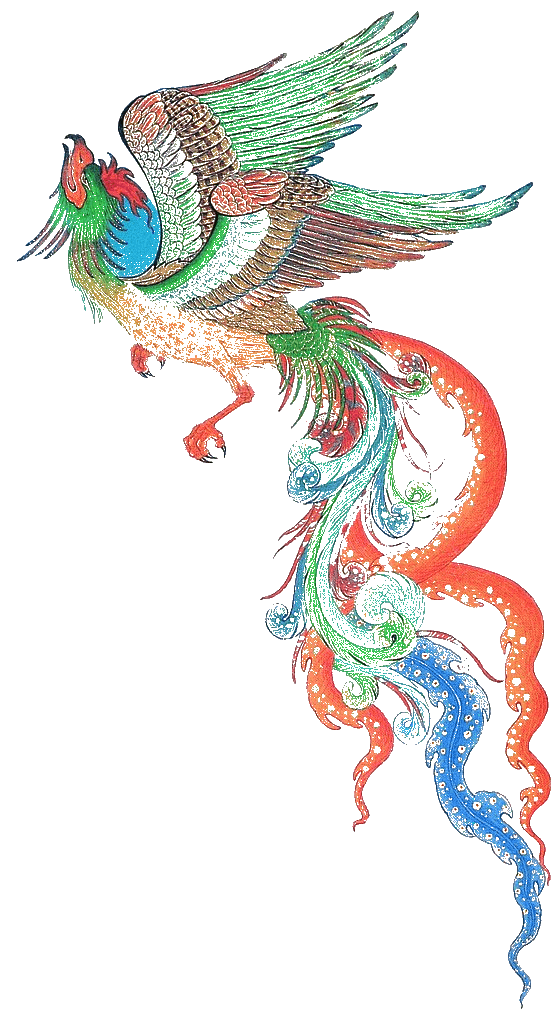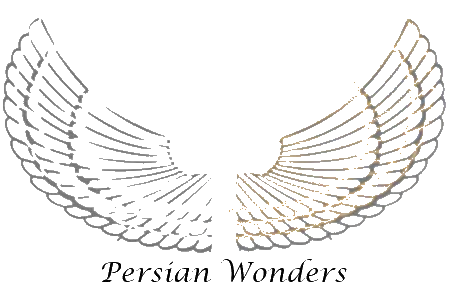The Chogha Mish
Harp
Modern Reconstruction

The Harp
Modern Interpretation Inspired From The Choga Mish
The modern recreation of the harp was inspired by the mid-fourth millennium BCE cylinder seal discovered in Chogha Mish.
Before we attempted to create a Chogha Mish harp, it was first made by Seifolah Shokri.
We have researched to create a modern interpretation inspired by the Choga Mish harp, featuring only a few strings and a bow design.
We proudly can display a step-by-step design beautifully crafted by Briken exclusively for the history of music event.
The History
The harp serves as an illustration of a musical instrument that traces its roots primarily to the Elamite civilization
and the Sumerian civilization in Mesopotamia. Typically, a harp consists of a body and a column (neck) connected at an acute
angle. The strings are attached at an angle from the body to the column or neck of the instrument. When playing the harp, the
strings are either plucked directly by the fingers or the sounds are produced using a larger plectrum. Some scholars suggest
that the harp was inspired by the shape of a hunter's bow. In ancient Elam, various types of harps existed, including bow harps,
standing harps, lying harps, and small harps.
Earliest Harp
The earliest harp was made from a gourd or calabash. The photo shows the shaping of the calabash during its growth,
emptying the seeds and finally attaching a wooden neck and tuning pegs.
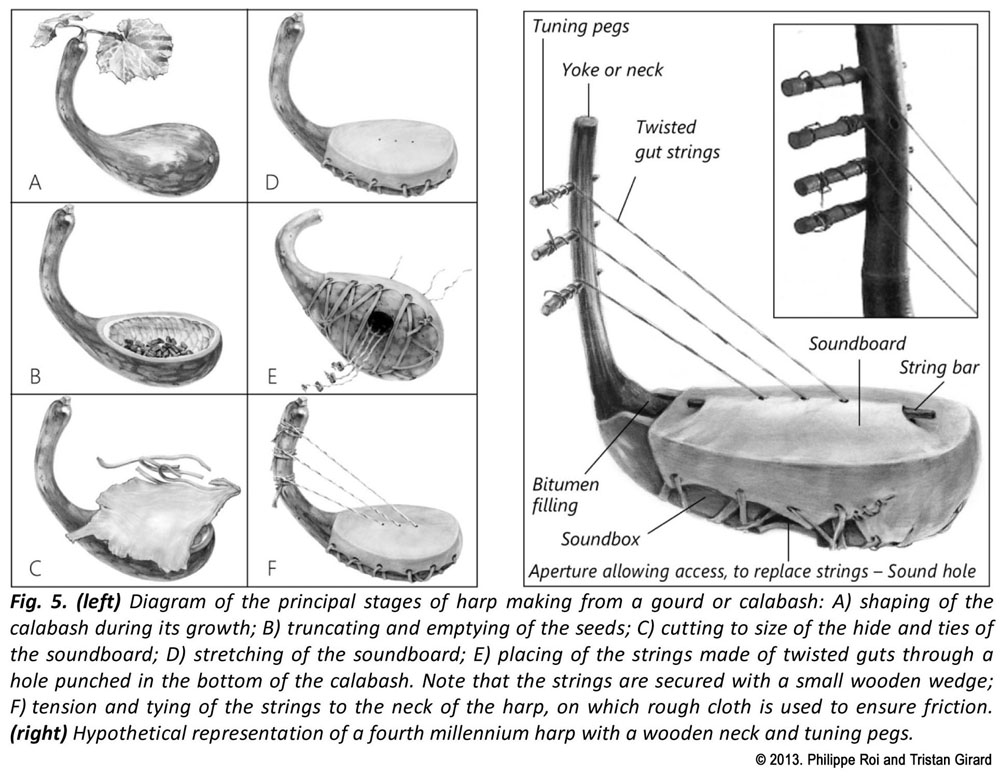
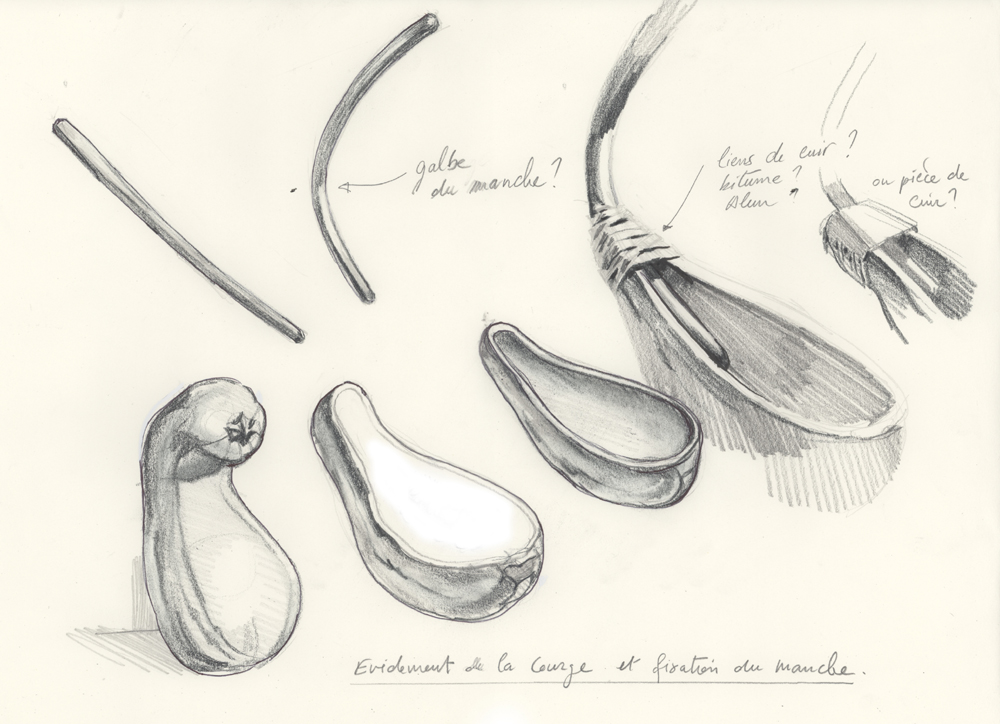
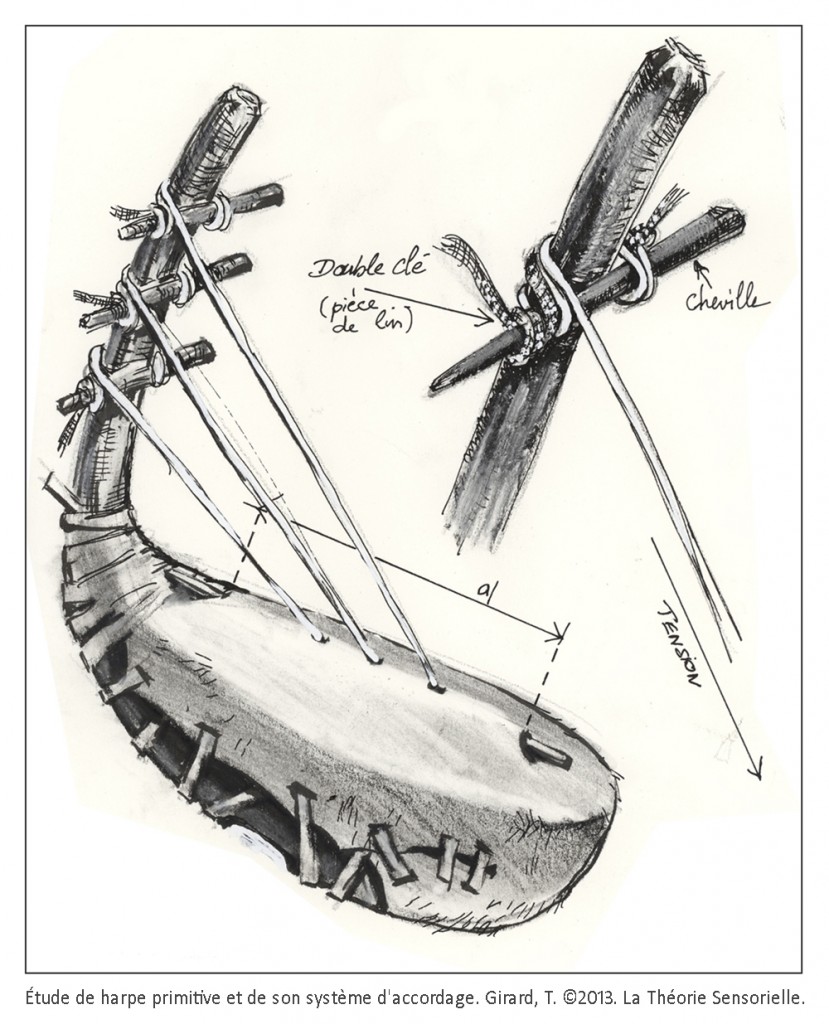 Philippe Roi, Tristan Girard. "Analogie entre la harpe urukéenne et le système auditif", La Théorie Sensorielle. I - Les Analogies Sensorielles, pp.83-100, 2013. hal-03204714
Philippe Roi, Tristan Girard. "Analogie entre la harpe urukéenne et le système auditif", La Théorie Sensorielle. I - Les Analogies Sensorielles, pp.83-100, 2013. hal-03204714
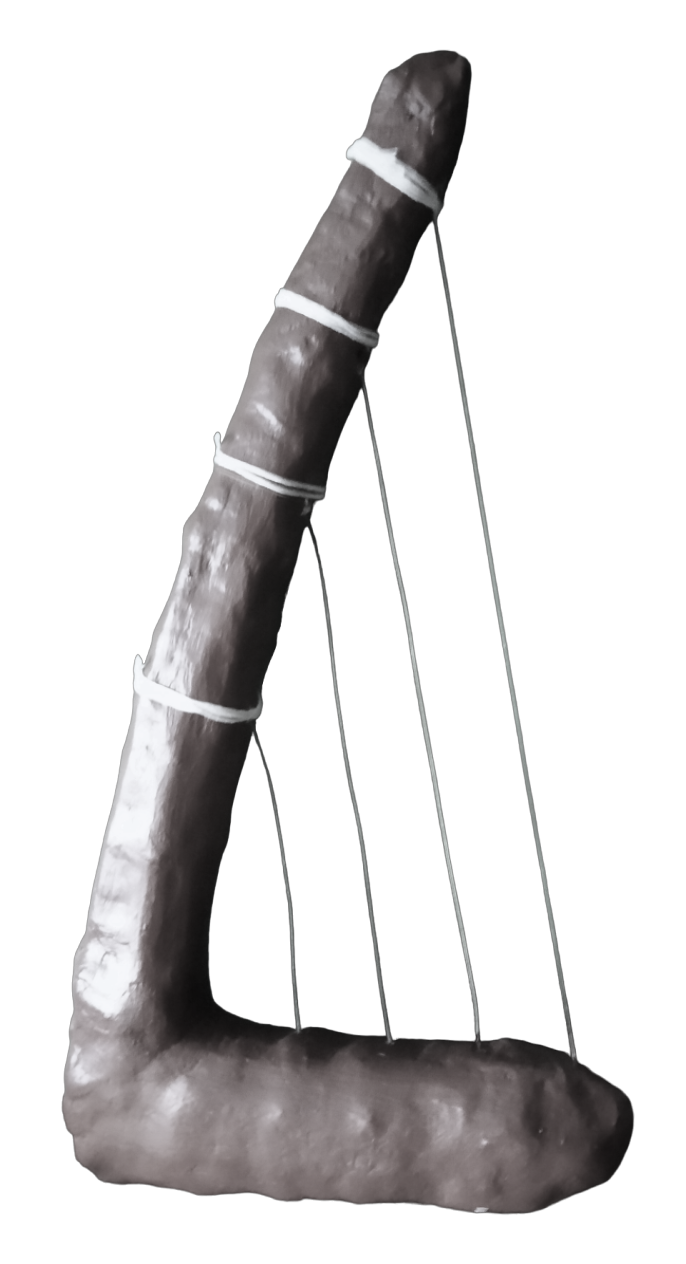 Reconstruction of a Choga Mish Harp by Richard Dumbrill
Musicologist
Reconstruction of a Choga Mish Harp by Richard Dumbrill
Musicologist
The main harp variants utilized a bow-like structure. This particular instrument takes the shape of a hunter's bow,
where the lower section supports the body and the upper part holds the column.
The depicted seal showcases the earliest known orchestra in the world, featuring double-reed instruments,
naqqarahs, and bow harps positioned near the singers.
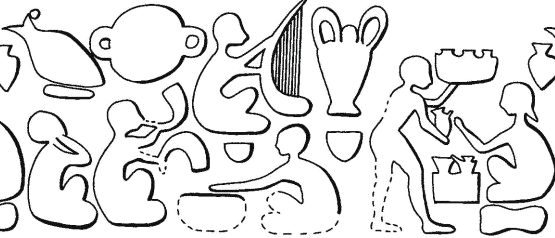
In this depiction, a large bow harp is showcased with a discernible silhouette of a musician kneeling behind it.
The tuning of the instrument can be adjusted by tightening or loosening the strings. The seal on the harp suggests a total of 6
strings can be utilized. The body of the instrument is situated at the lower end, while the handle is connected to the base resembling an arch.
The musician holds the harp with both hands, potentially using one hand to strike the plectrum and the other to control the string vibrations.
According to this illustration, the ancient Elamite bow harp can be played alongside a singer, naqqara, and double-reed instrument.
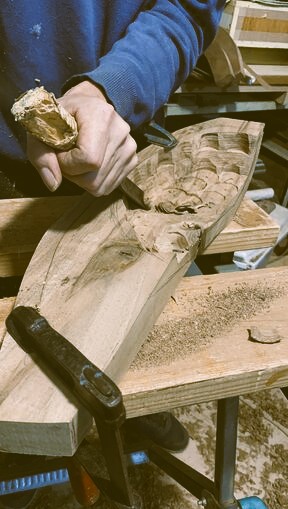
Modern Reconstruction The reconstruction of the harp: the music box (bottom) is made from Istanbul walnut, the neck is made from American walnut, the tuning pegs are made from ebony wood, and bone used to decorate and use gut strings.
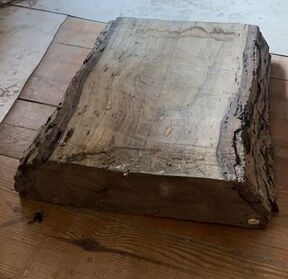





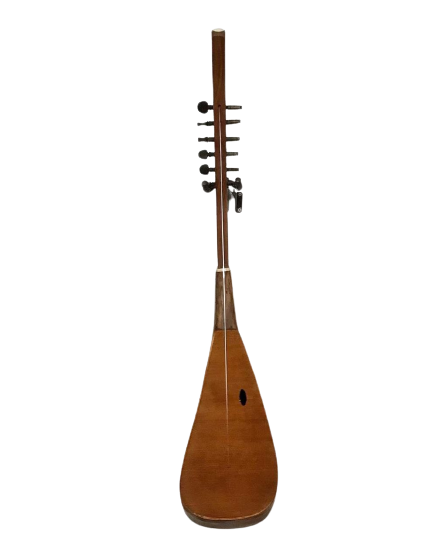
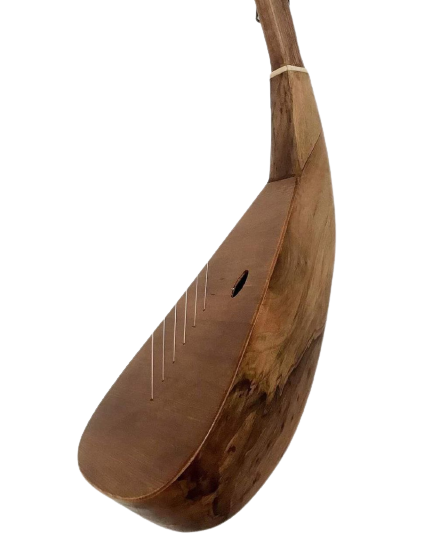

Close
References
*PW - Persian Wonders (based on our conclusion and study)- 1. Majidzadeh, Yousef. "The Land of Aratta." Journal of Near Eastern Studies 35, no. 2 (1976): 105-13. Accessed August 10, 2020. www.jstor.org/stable/545195.
- 2. The British Museum. 2020. collection. [ONLINE] Available at: https://www.britishmuseum.org/collection/object/W_1936-1217-2. [Accessed 10 August 2020].
- 3. Madjidzadeh, Youssef & Pittman, Holly. (2008). Excavations at Konar Sandal in the region of Jiroft in the Halil basin: First preliminary report (2002-2008). Iran. 46. 69-103. 10.2307/25651436.
- 4. Geoffrey,B. Olivier,J. Youssef,M. ARTE France.; Gedeon Programmes. Special Broadcasting Service Corporation. SBS-TV. (2005). Unearthing the lost kingdom of Aratta. [Video file]. Retrieved from https://www.terranoa.com/product/product.php?code=125
- 5. Majidzadeh, Yousef. "The Land of Aratta." Journal of Near Eastern Studies 35, no. 2 (1976): 105-13. Accessed August 10, 2020. www.jstor.org/stable/545195.
- 6. Francfort H.-P., Tremblay X. Marhaši et la civilisation de l'Oxus // Iranica Antiqua, vol. XLV (2010), pp. 51–224. doi: 10.2143/IA.45.0.2047119.
- 7. Madjidzadeh, Youssef & Pittman, Holly. (2008). Excavations at Konar Sandal in the region of Jiroft in the Halil basin: First preliminary report (2002-2008). Iran. 46. 69-103. 10.2307/25651436.
- 8. Desset, Francois. (2014). A new writing system discovered in 3rd millennium bce iran: The konar sandal 'geometric' tablets. Iranica Antiqua. 49. 83-109. 10.2143/IA.49.0.3009239.
- 9. Geoffrey,B. Olivier,J. Youssef,M. ARTE France.; Gedeon Programmes. Special Broadcasting Service Corporation. SBS-TV. (2005). Unearthing the lost kingdom of Aratta. [Video file]. Retrieved from https://www.terranoa.com/product/product.php?code=125
- 10. Geoffrey,B. Olivier,J. Youssef,M. ARTE France.; Gedeon Programmes. Special Broadcasting Service Corporation. SBS-TV. (2005). Unearthing the lost kingdom of Aratta. [Video file]. Retrieved from https://www.terranoa.com/product/product.php?code=125
- 11. Curtis, J. Finkel,I (Ed.). (2013). The Cyrus Cylinder: The Great Persian Edict from Babylon.
- 12. Curtis, J. (2013). The Cyrus Cylinder and Ancient Persia: A New Beginning for the Middle East.
- 13. Farzin, R. (2007). Iran: Seven Faces of Civilization.
